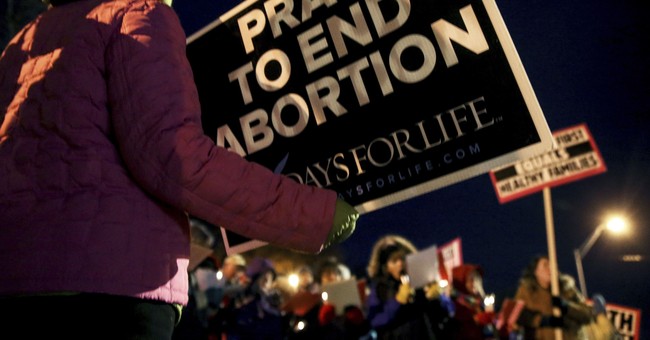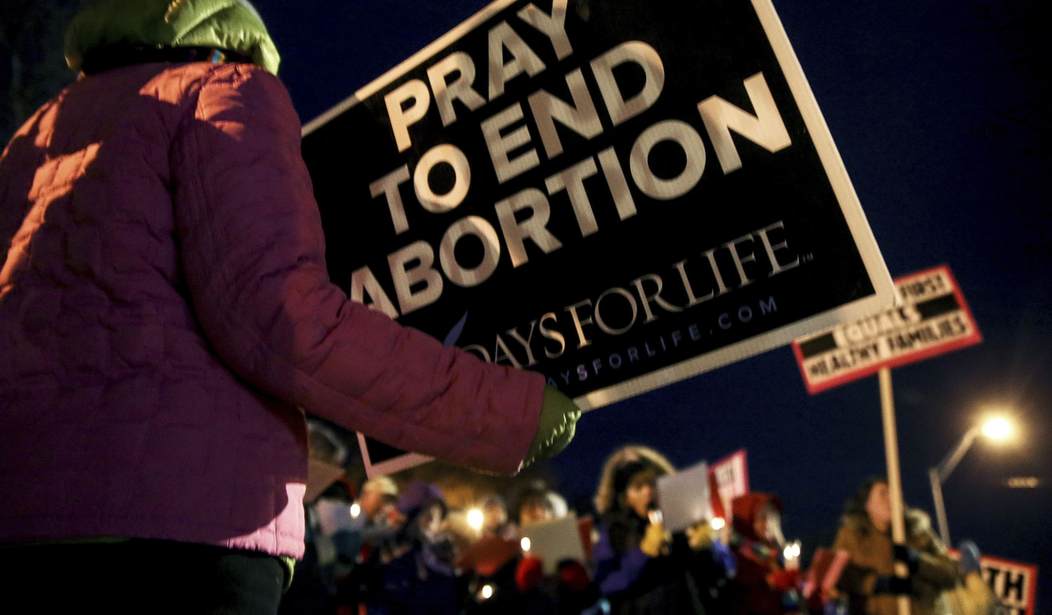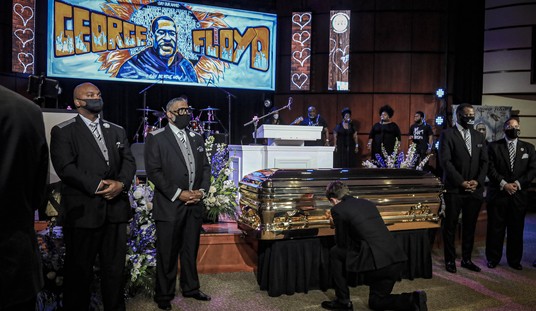
FILE – In this Dec. 12, 2016, file photo, protesters hold anti-abortion signs outside the Planned Parenthood Columbia Health Center on in Columbia, Mo. Planned Parenthood Great Plains spokeswoman Emily Miller says abortions scheduled for Wednesday, Oct. 3, 2018, at the Columbia clinic are canceled. Federal appeals judges ruled last month that Missouri can enforce a requirement that doctors performing abortions must have admitting privileges at hospitals. The Columbia clinic hasn’t met that requirement. (Timothy Tai/Columbia Daily Tribune via AP, File)
This morning, the Supreme Court heard what may end up being the most significant abortion case since Roe vs. Wade. This is the background: In 2014, Louisiana passed a law, State Law 620, which required all abortions to be performed by a doctor who had admitting privileges in a hospital within 30 miles. The law was very similar to a Texas law that was struck down by the Supreme Court in June 2016 in the case called Whole Woman’s Health v. Hellerstedt. This was 5-3 decision, Justice Scalia having recently died, in which Chief Justice John Roberts voted to uphold the law. So it was no surprise when an abortuary sued and, given Whole Woman’s Health, a district court judge issued an injunction. When the case was appealed, the Fifth Circuit, the same court that ruled against Texas upheld the Louisiana law. Heads exploded. An emergency appeal was lodged with the Supreme Court and, by 5-4, an injunction was granted. In this case, Roberts voted for the injunction.
When the Supreme Court agreed to hear the case, now called June Medical Services LLC v. Russo, it said it wanted to focus on two questions:
(1) Whether abortion providers can be presumed to have third-party standing to challenge health and safety regulations on behalf of their patients absent a “close” relationship with their patients and a “hindrance” to their patients’ ability to sue on their own behalf; and (2) whether objections to prudential standing are waivable – per the U.S. Courts of Appeals for the 4th, 5th, 7th, 9th, 10th and Federal Circuits – or non-waivable per the U.S. Courts of Appeals for the D.C., 2nd, and 6th Circuits.
This is not the battleground the abortion industry wants to fight on. The cases supporting abortion that arrive in the courts are invariably brought by a third party, usually an abortuary, on the behalf of an amorphous class of “patients” (I don’t know what they called them at Auschwitz). Generally, Article III of the Constitution prevents you from going into court so sue someone for doing something that doesn’t affect you. This gets to the whole idea of standing.
The second standing issue is one of creation by the state:
“The abortion providers counter that it is too late for the state to argue that they lack a legal right to sue on behalf of their patients. Earlier in the case, the providers stress, the state agreed that the clinic had a right to sue, and it didn’t raise any objection to the providers’ right to sue until the providers filed their petition for Supreme Court review.”
Bottom line, if the abortuaries are not allowed to sue on behalf of people, many of whom they don’t even know, then that means that every suit against an abortion law must be brought by a woman seeking to have an abortion who can’t get one because of a law. This means, for all intents and purposes, that any state that wishes to basically ban abortion will have the tools it needs to do so.
In court today, things don’t seem to have gone all that well. We know, up front, that at least four justices–Alito, Gorsuch, Kavanaugh, and Thomas–will vote to uphold the Louisiana law. One basically gave his decision during the questions:
Justice Samuel Alito, a member of the minority in Whole Woman’s Health, sharply questions [Julie Rikelman of Center for Reproductive Rights] on the third-party standing of the abortion providers, finding several of her answers “amazing” or “highly debatable.”
Kavanaugh got an admission from her that all admitting privileges laws were unconstitutional because none of them served a state purpose.
Despite the beating they took there, according to Amy Howe at SCOTUSBlog, the decision may not come down to standing.
Roberts repeatedly returned to the question of how the justices should apply their 2016 decision in the Texas case, Whole Woman’s Health v. Hellerstedt, to this case. Is the inquiry under Whole Woman’s Health, he first asked Rikelman, a factual one that has to be conducted state by state? For example, Roberts posited, the district court would examine the availability of doctors and clinics in a particular state, so that the results could be different in different states. Roberts’ view on this question could be important: If he concludes that the Whole Woman’s Health inquiry is a factual one that is conducted state by state, it could allow him to find some daylight between the Louisiana law and the Texas law that the court struck down four years ago.
If her assessment is correct, then the vote against kicking the case on standing is probably Roberts’ because to do so will literally overturn just about every abortion decision made by the Supreme Court going all the way back, literally, to Roe vs. Wade. He seems to be trying to find some way to make the Louisiana law sufficiently different from the Texas law that he won’t have to overturn precedent. If he does so, then all he’s done is draw a roadmap for other states to do what Louisiana has done and he’ll be seeing these cases every week for as long as he’s on the court.
Sadly, given the fact that Roberts was born without a spine, or if he has one it is made of Silly Putty, and that we know he does not like abortion cases, the most likely outcome here is that Roberts finds the Louisiana law to be like the Texas one, calls it unconstitutional, and the struggle against abortion is stymied yet again.














Join the conversation as a VIP Member